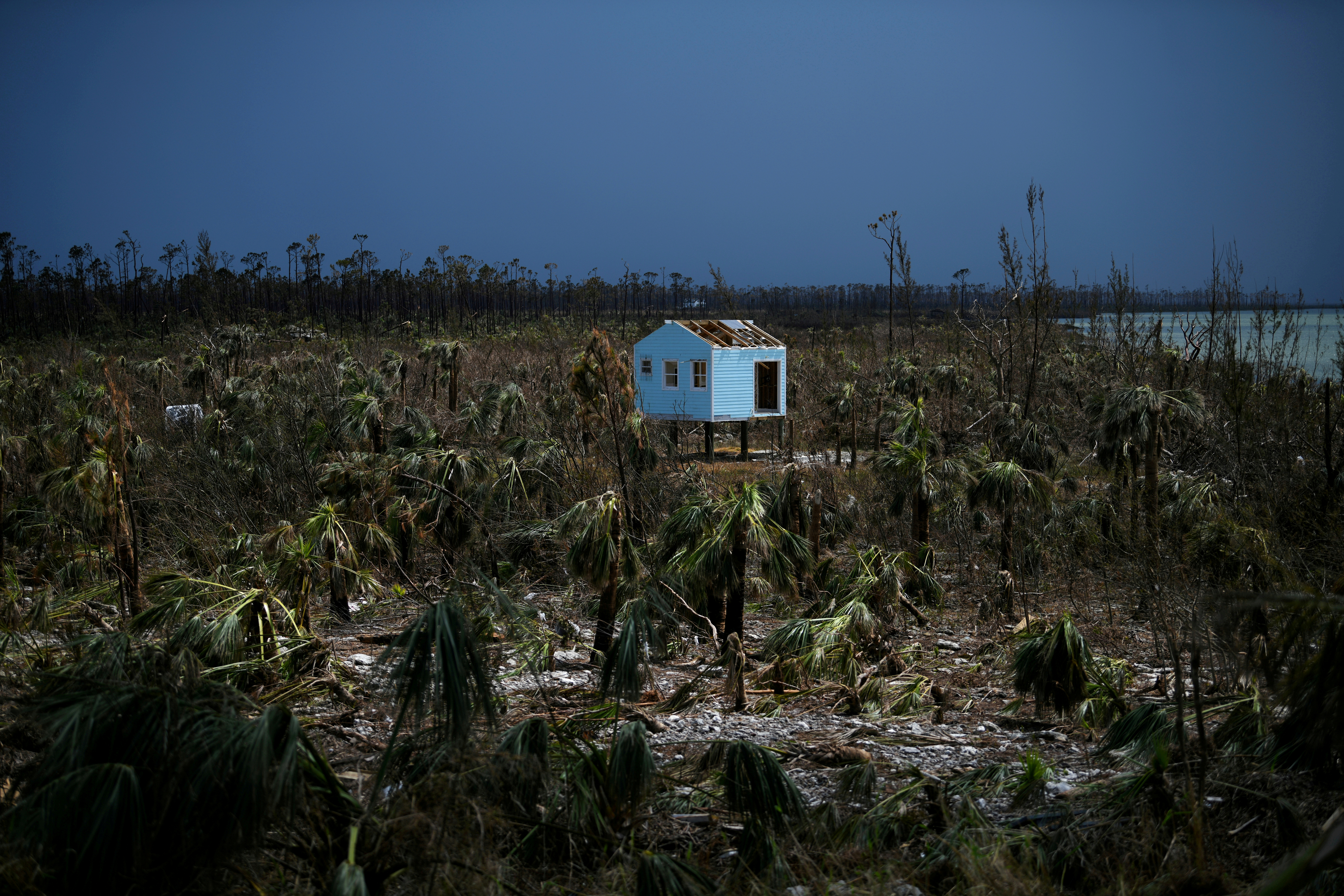
By Laura Gottesdiener and Ricardo Arduengo
LES CAYES, Haiti (Reuters) -The search for survivors of a weekend earthquake that killed more than 1,400 people on Haiti resumed on Tuesday after an overnight storm battered thousands left homeless with heavy rain before the weather front moved on.
The quake brought down tens of thousands of buildings in the poorest country in the Americas, which is still recovering from a temblor 11 years ago that killed over 200,000 people, and flooding caused by the storm has complicated rescue efforts.
By Tuesday morning, only a light rain was falling over Les Cayes, the southern coastal city that bore the brunt of the 7.2 magnitude quake after Tropical Storm Grace had dumped torrential rains and caused flooding in at least one region.
At a tent city in Les Cayes containing many children and babies, over a hundred people scrambled to repair makeshift coverings made of wooden poles and tarps that were destroyed by Grace overnight. Some took cover under plastic sheets.
Mathieu Jameson, deputy head of the committee formed by the tent city residents, said hundreds of people there were in urgent need of food, shelter and medical care.
“We don’t have a doctor. We don’t have food. Every morning more people are arriving. We have no bathroom, no place to sleep. We need food, we need more umbrellas,” said Jameson, adding the tent city was still waiting for government aid.
Haiti’s latest natural disaster comes just over a month after Haiti was plunged into political turmoil by the assassination of President Jovenel Moise on July 7.
Several major hospitals were severely damaged, hampering humanitarian efforts, as were the focal points of many shattered communities, such as churches and schools.
Haitian authorities said on Monday that 1,419 deaths had been confirmed, with some 6,900 people injured.
As hopes began to dim of finding significant numbers of survivors among the wreckage, the storm impeded rescuers in the seaside city of Les Cayes, about 150 km (90 miles) west of the capital Port-au-Prince, which bore the brunt of the quake.
By early morning, Grace, which had been forecast to dump up to 15 inches (38 cm) of rain on parts of the country, had moved past Haiti and was advancing on the coast of Jamaica, according to the U.S. National Hurricane Centre.
Rescue workers were digging alongside residents through the rubble on Monday evening in a bid to reach bodies, though few voiced hope of finding anyone alive. A smell of dust and decomposing bodies permeated the air.
“We came from all over to help: from the north, from Port-au Prince, from everywhere,” said Maria Fleurant, a firefighter from northern Haiti.
Emergency workers pulled a blood-stained pillow from the rubble, followed by the corpse of a three-year-old boy who appeared to have died in his sleep during the earthquake.
Shortly after, as the rain intensified, the workers left.
RISING TOLL
With about 37,312 houses destroyed by the quake, according to Haitian authorities, and many of those still unexcavated, the death toll is expected to rise.
Vital Jaenkendy, who watched as a bulldozer shifted rubble from his collapsed apartment building, said eight residents had died and four were missing.
Jaenkendy and others have been sleeping under a tarpaulin on a dirt road nearby, and were hunkering down for the rains.
“When the storm comes, we’ll take shelter in car ports of the houses nearby, just until it passes, and then we’ll return to our place in the road,” he said.
Doctors battled in makeshift tents outside hospitals to save the lives of hundreds of injured, including young children and the elderly.
Prime Minister Ariel Henry, who was sworn in less then a month ago after Moise’s assassination, vowed to disburse humanitarian aid better than in the wake of the 2010 quake.
Though billions of dollars in aid money poured into Haiti after that quake and Hurricane Matthew in 2016, many Haitians say they saw scant benefits from the uncoordinated efforts: government bodies remained weak, amid persistent shortages of food and basic goods.
“The earthquake is a great misfortune that happens to us in the middle of the hurricane season,” Henry told reporters, adding that the government would not repeat “the same things” done in 2010.
(Reporting by Laura Gottesdiener and Ricardo Arduengo in Les Cayes, Haiti;Additional reporting by Herbert Villarraga and Robenson Sanon in Les Cayes; Editing by Daniel Flynn, Clarence Fernandez and Giles Elgood)












